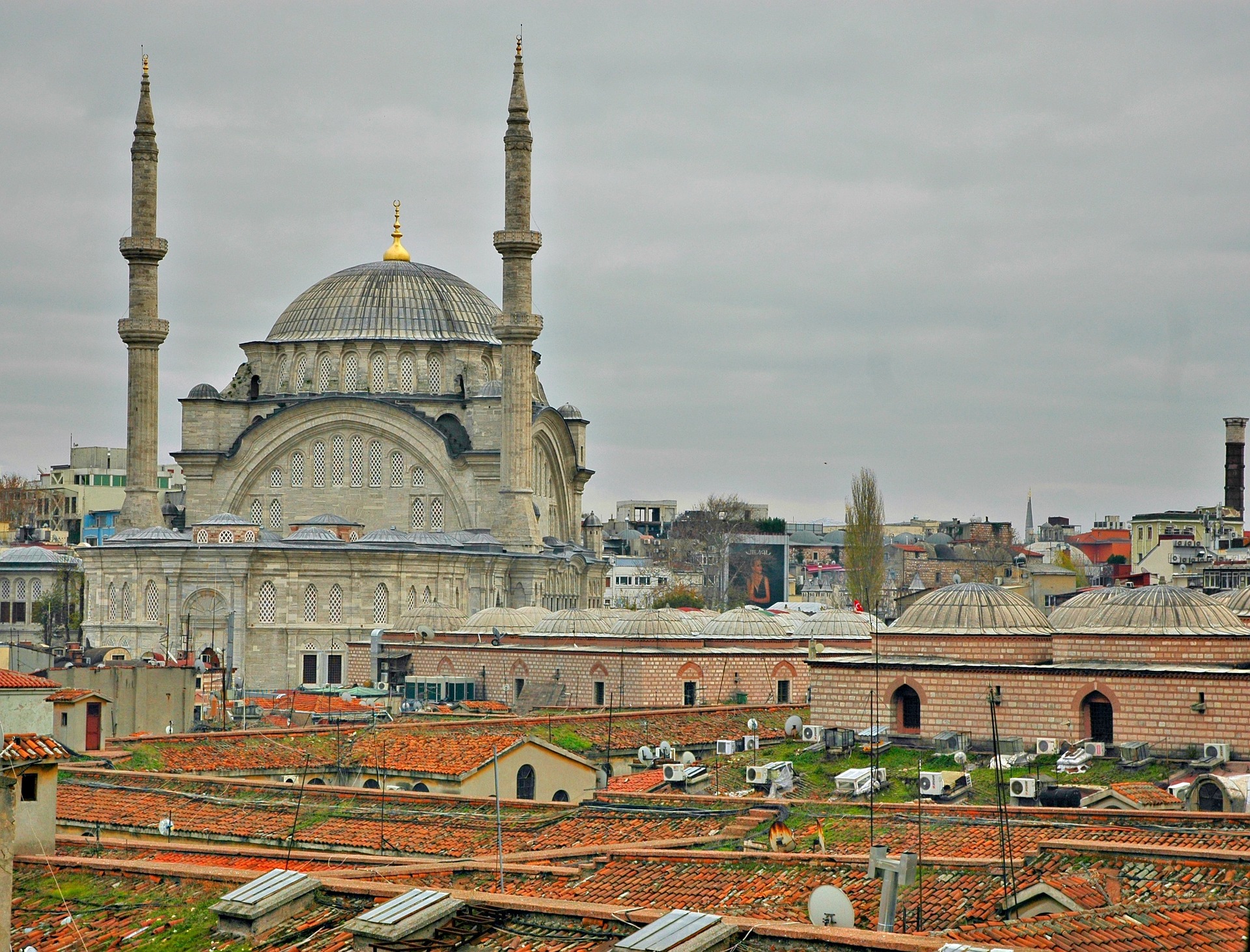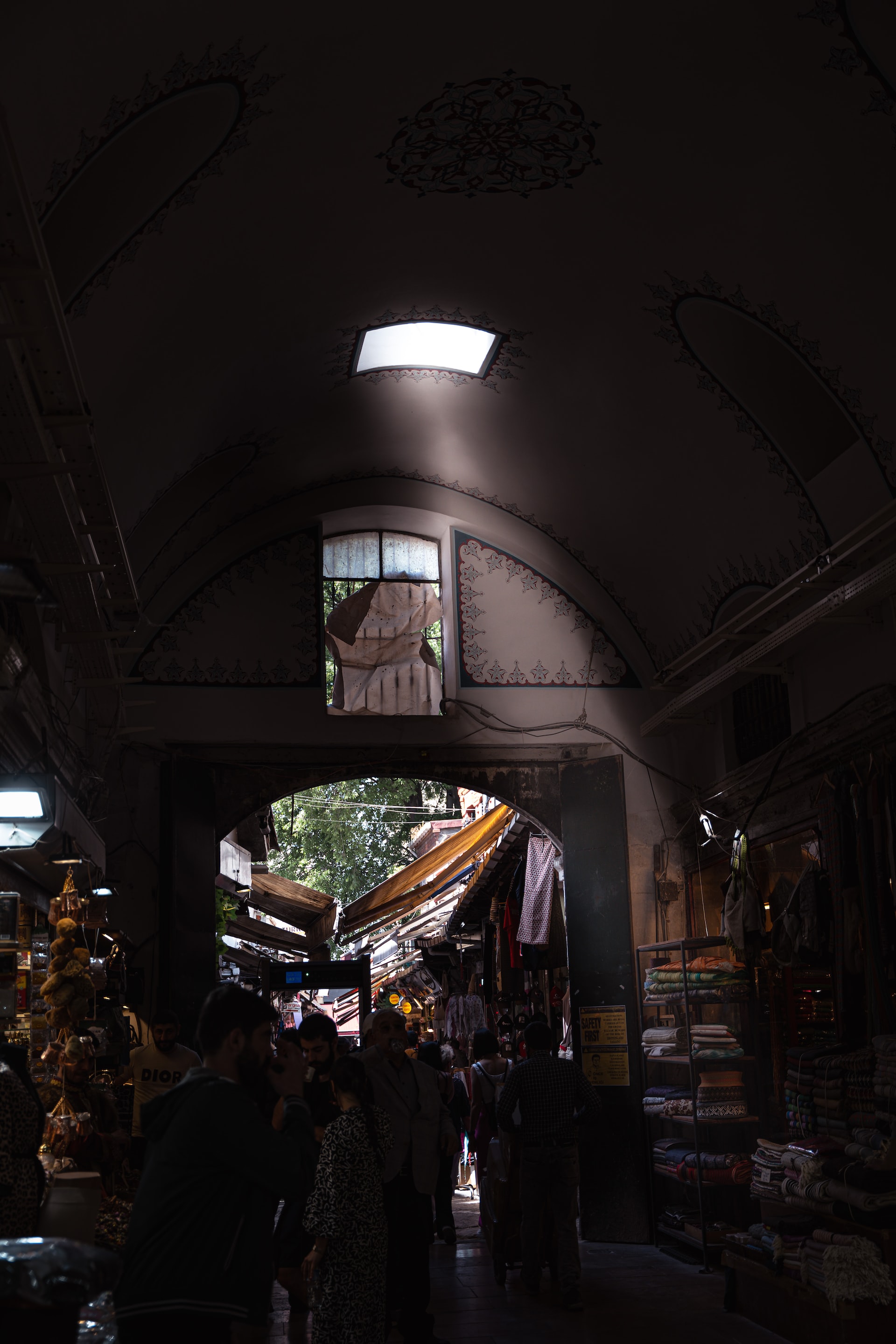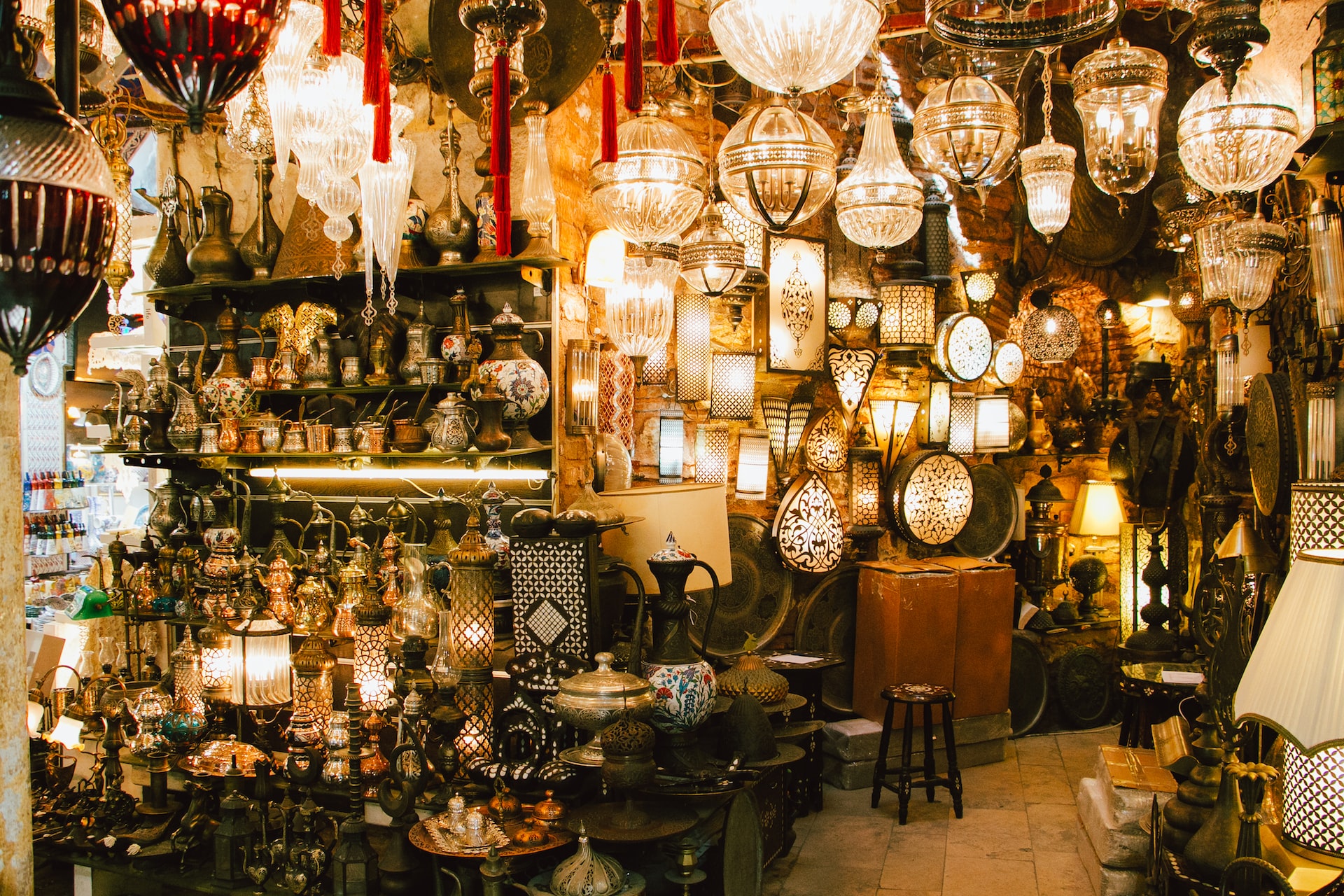Culture & Travel
10 May 2025“Don’t dismiss the Grand Bazaar; the Grand Bazaar is a sealed box.”
– Orhan Veli
I don’t know about you, but every time I step into the Grand Bazaar, I inevitably get lost. And without fail, these lines from Orhan Veli’s poem echo in my mind. Luckily, I’ve got the perfect excuse: well, what can you do? You can’t just dismiss the Grand Bazaar—it’s a massive maze with 24 gates, 14 caravanserais (inns), 65 streets, and over 3,600 shops.
But is it only visitors who get lost in the Grand Bazaar? Unfortunately, no. This piece is about the other things that have gone missing.

If I had to describe the Grand Bazaar in just one sentence, I would say:
“The Grand Bazaar is a matter of etiquette.”
Because I know that what gives this place its character is not just its centuries-old walls, but the generations of artisans and merchants who have worked here for nearly six hundred years—upholding trade ethics, traditions, and customs that shaped the very spirit of the bazaar.
One of those long-standing customs was the allocation of specific streets or sections of the bazaar to specific trades. Each group of craftsmen would operate only in their designated area. Sadly, with time and advancing technology, many of these professions—and even their names—have disappeared. But some traces still remain, quietly preserved in the names of streets and hans (inns) of the bazaar.
Let’s follow those traces.
ÇUHACILAR – The Broadcloth Merchants
“Çuha” refers to a tightly woven, felted and dyed cloth made from pure wool yarn. It was primarily used in men’s clothing, saddle covers, and slipper making. But its most prominent user? The Janissaries—elite soldiers of the Ottoman Empire.
One of the 24 historic hans in the Grand Bazaar, Çuhacı Han, was the place where civilians could purchase this durable fabric, since military supplies were sourced elsewhere. The merchants specializing in this trade were known as Çuhacılar—the broadcloth merchants.
KÜRKÇÜLER – The Furriers
In the Ottoman era, fur was more than just winter wear—it was a symbol of status. Valuable furs adorned the collars of garments worn by sultans, caliphs, and high-ranking officials. It was customary to present fur-lined cloaks to brides as well—especially the famed “Ördekbaşı” style.
Furriers were not only sellers but also experts in repair and restoration. They primarily operated in the Kürkçüler Bazaar, located at the beginning of Kalpakçılar Avenue, between the Nuruosmaniye and Beyazıt gates of the bazaar.
ALTIN VARAKÇILAR – The Gold Leaf Artisans
“Varak” is the name for delicate gold sheets, produced by hammering gold bars between leather sheets after passing them through rollers. These shimmering leaves were used for decoration, either applied as gilding or dissolved in water to be used as paint.
This rare craft was practiced by a specific group of artisans based in Varakçı Han—The Gold Leaf Inn—where gold leaf was crafted and sold for ornamental use in manuscripts, architecture, and art.
SORGUÇÇULAR – The Feather Traders
Perhaps the most unusual of all professions in the Grand Bazaar belonged to the Sorguççular—traders in ornamental feathers from the world’s most exotic birds. These feathers were auctioned and bought by the Ottoman elite—sultans, princes, viziers, and noblewomen.
Used to decorate imperial headgear and even jewels, these rare plumes were highly prized. Their marketplace was known as Sorguççu Han, where these luxurious trade transactions once took place.

ÖRÜCÜLER – The Invisible Menders
This artisan group, whose name lives on through one of the Grand Bazaar’s gates, had a remarkably delicate craft: they repaired torn fabrics, shawls, and garments—both men's and women’s—so skillfully that the repair was almost invisible.
A few years ago, I had the chance to interview Seyfi, a 74-year-old master craftsman believed to be the last active practitioner of this art in the Grand Bazaar. During our conversation, he said, “There are maybe two or three of us left in all of Istanbul who still do this.” His quiet resilience reflects a profession slowly vanishing, but still alive in the memory of the bazaar’s winding paths.
İĞCİLER – The Needle Makers
This nearly forgotten guild specialized in crafting the essential tools of countless other trades: hand-spun thread needles, knitting pins, crochet hooks for embroidery, large curved quilting needles, and long pins for cushion-making.
Author Mahmut Celalettin Musâhipzâde noted in his writings that the narrow street beneath the Örücüler Bazaar was once known as İğciler Sokağı—“Needle Makers’ Street.” The name stands today as a subtle but enduring homage to this fine-handed craft.
KALPAKÇILAR – The Hat Makers
Giving their name to the Grand Bazaar’s main thoroughfare, the Kalpakçılar were makers of the kalpak—a visorless, cone-shaped hat typically made of black sable or lambskin. A practical accessory in cold weather, kalpaks also carried symbolic weight; they were the signature headgear of the early 20th-century Turkish Kuva-yi Milliye (National Forces) movement.
Today, Kalpakçılar Street remains one of the bazaar’s busiest routes, a reminder of the artisans who once filled it with the soft textures of felt and fur-lined hats.
YAĞLIKÇILAR – The Lingerie and Bridal Accessories Sellers
“Yağlık” was an old term for intimate apparel—items like undergarments, bloomers, and nightshirts. The Yağlıkçılar, or “Lingerie Sellers,” not only offered these everyday essentials but also rented out ornate bridal wear, including veils, silk headscarves, beaded tiaras, and even feathered diamond crowns for brides-to-be.
Their shops were places of elegance and celebration, especially for women preparing for their big day. Though the trade has faded with time, its traces linger in the whispered histories of the bazaar’s stone walls.

FERMENECİ – The Embroidered Trimming Artisans
“Fermene” refers to a type of decorative embroidery made with silk and metallic threads, traditionally used on garments such as shalwars, breeches, kneepads, vests, and women's outer cloaks. The artisans who specialized in this elaborate needlework were known as Fermenecis.
GAYTANCILAR & DÜĞMECİLER – The Braiders and Button Makers
The Gaytancılar, or braid makers, and Düğmeciler, or button makers, were complementary to the Fermenecis. They crafted and applied silk and gold-threaded braids to collars and sleeves, and produced the delicate buttons sewn onto these finely decorated garments. This artisan group worked between the start of Zenneciler Street and the Yağlıkçılar Bazaar, forming an essential part of the Grand Bazaar's textile network.
ZENNECİLER – The Women’s Textile Merchants
Zenneciler were merchants specializing in goods for women: fabrics, needles, threads, bridal dresses, linens, and shawls. Though traditional guild rules forbade merchants from showcasing products outside their shop fronts to avoid unfair competition, the Zenneciler were allowed to display their wares on poles in front of their stores.
They operated primarily within İç Bedesten—the innermost and oldest section of the Grand Bazaar—offering a colorful and essential array of goods for the women of the city.
KAVAFLAR – The Shoemakers
The Kavaflar were artisans who produced and sold all kinds of footwear—mostly slippers and soft shoes—designed for comfort and everyday wear. Their trade was centered on Kavaflar Street, named after the very craft they practiced. Their work reflected both function and form, contributing to the everyday elegance of Ottoman life.
The Grand Bazaar: A Living Legacy
It’s undeniable that the Grand Bazaar has been the beating heart of Istanbul’s commerce for nearly six centuries. And with such a deep history, it’s only natural that the bazaar has developed its own unique culture—a code of conduct, a shared memory, and a rhythm of trade passed down through generations.
Keeping this culture alive starts with knowing the stories, the places, and the professions that once defined it. Though many trades have vanished with time, learning about them adds a new layer of meaning to each visit.
Most importantly, the Grand Bazaar still welcomes every visitor with the promise of discovery. Who knows what you'll uncover on your next trip? Don't say "I can't"—all it takes is a little curiosity, a willingness to read, and the joy of exploring.
Happy exploring...
GEZMEKYETMEZ
